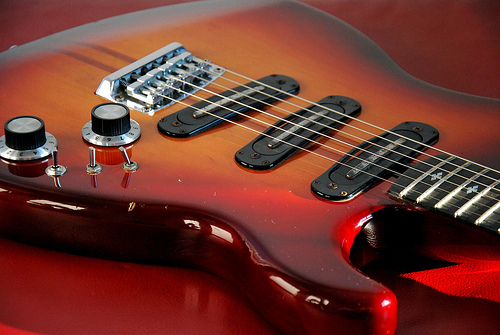Despite having a rich history behind them in the guitar industry, Yamaha is not a name most people would immediately associate with the instrument. However, while the likes of Gibson and Fender lead the way, Yamaha does enjoy a portion of the market and is still a respected name when it comes to guitar production.

Yamaha’s First Guitars
Yamaha released their first solid body guitar – they prefixed their models with ‘SG’ – in 1965. The SG-3 was their first real mainstream model, and the detail and appearance was magnificent, particular in comparison to early Fender models. However, the SG-3 remained very much within Japan; very few were exported to the United States and around the world owing to the dominance of Gibson and the emergence of Fender around the same time.
Between 1965 and 1981, further SG models would be released, with 1966’s SG-7 their first electric model.
RGX & RGZ Guitars
From the 1980’s to today, Yamaha have released RGX and RGZ guitars. There have been four generations of the RGX models, although as Yamaha have looked to cater for the widest market possible, there is a lot of crossover between the first three.
The first models were released in 1987, notable for their resemblance to the famous Jackson Soloist and Fender ‘Superstrat’ models. RGX models were also known for having 24 frets – more in some cases – and a bolt-on neck, a feature that even today still fuels much debate around the perceived advantages and disadvantages of it. Yamaha were criticised in some quarters owing to the perception that the design and appearance of their guitars had taken a backward step from the original 1960s models.
The evolution of Yamaha guitars moved quickly at this time. By 1994, the company was working exclusively on their third generation RGX models, and aiming to get back their reputation for delivering great looking detail and features. RGZ models had enjoyed limited success, so were discontinued at this time.
Late 90’s & Today
Production of the third generation RGX models ceased in the late 90’s, and 2003 would see the launch of their first fourth generation RGX, the RGX 121 S. A handful of other guitars would be launched between 2003 – 2005, all of which went back to looking brilliant while also delivering the latest technology and features guitarists around the world expected.
Yamaha have not launched any new models since this time, but haven’t definitively said they’re not going to do so. The history of Yamaha demonstrates they frequently have lengthy gaps between products, which allows them to produce things that are clearly new and updated rather than the same product with a tweak here and there.
It remains to be seen whether we’ll see a new launch of Yamaha guitars in this decade, however.
Image Author: Freebird_71
Are you a guitarist? Check out our full range of online guitar lessonsAre you a saxophonist? Check out our full range of online saxophone lessons
Subscribe to Pro Music Tutor from as little as £7.99 per month
Related Posts
-
Is Music Theory Important to Modern Musicians?
The importance of music theory is a hot debate topic in the world of professional music. Some believe knowledge of music theory is what makes you a true musician, whereas some feel their lack of music theory knowledge is like a badge of honour. With the eternal debate over the importance of music theory raging […]
View All >> -
5 Ways Spanish Music Influenced the World
Contemporary popular music has transcended all national boundaries, with different types of music being performed and listened to in all corners of the world. Each culture also adds their own little tweaks and twists to the music, constantly creating new sounds and influences. Spanish music has deeply influenced the popular music we listen to today. […]
View All >>
Latest Blog Entries
-
The Benefits of Online Music Education
Learning music has never been easier, since the internet and modern technological advancements have opened the doors to countless possibilities, expanding the subjects people can choose from and how the lessons are taught. Now, people can study a whole host of music-related topics; from learning to play guitar or DJing, to understanding the inner workings […]
View All >> -
Essential Jazz Guitar Scales that are Easy to Learn
Improvising in jazz requires the ability to play in different keys over different chords. Results certainly do not come overnight, but with diligent practice, you would be surprised by what you can achieve. Many people ask me about what scales I use as if they were some big secret. While knowing your scales is very […]
View All >>
Blog Categories
- Categories
- Guitar Tips (93)
- History (36)
- How-To (38)
- Interviews (3)
- Music Industry (121)
- Prolinks Guitar (2)
- Prolinks Lessons (3)
- Prolinks Tutor's Profile (1)
- Saxophone Tips (40)
- Uncategorized (6)
Tags
Archive
- November 2018 (1)
- February 2018 (1)
- December 2017 (1)
- November 2017 (1)
- October 2017 (1)
- July 2017 (4)
- May 2017 (2)
- April 2017 (1)
- August 2016 (2)
- July 2016 (1)
- June 2016 (2)
- May 2016 (3)

